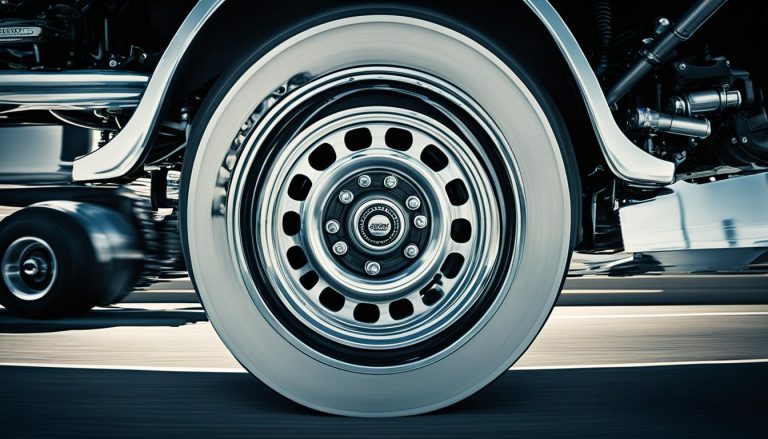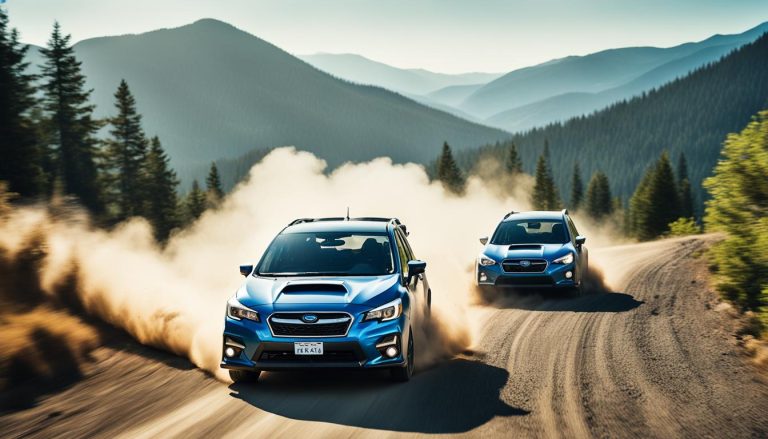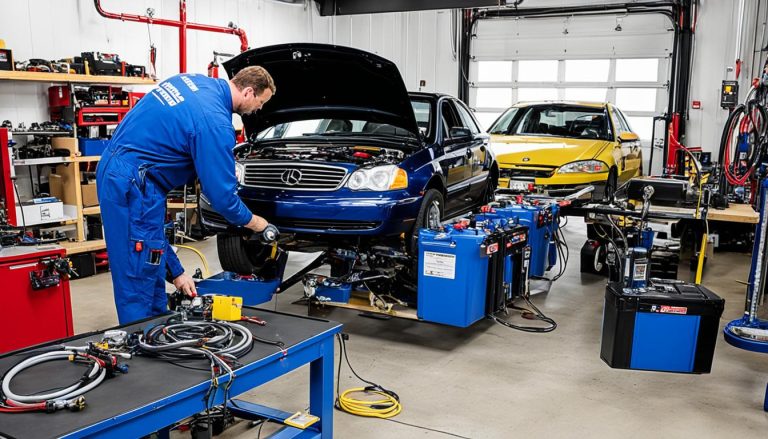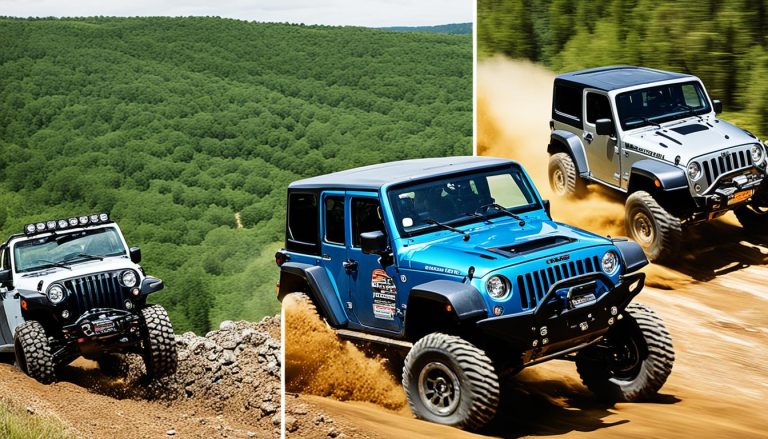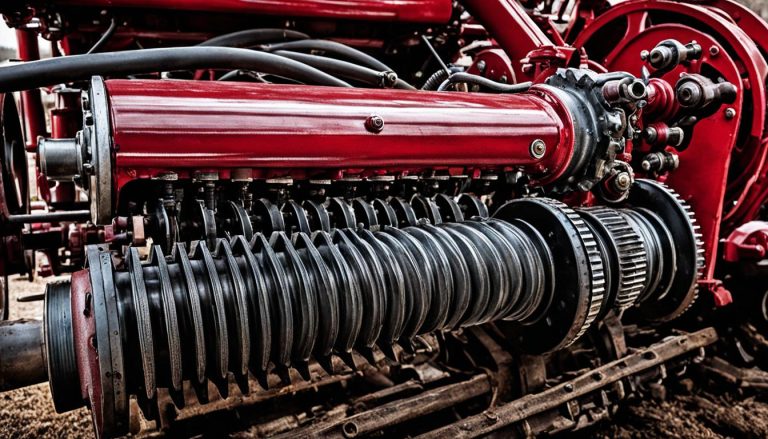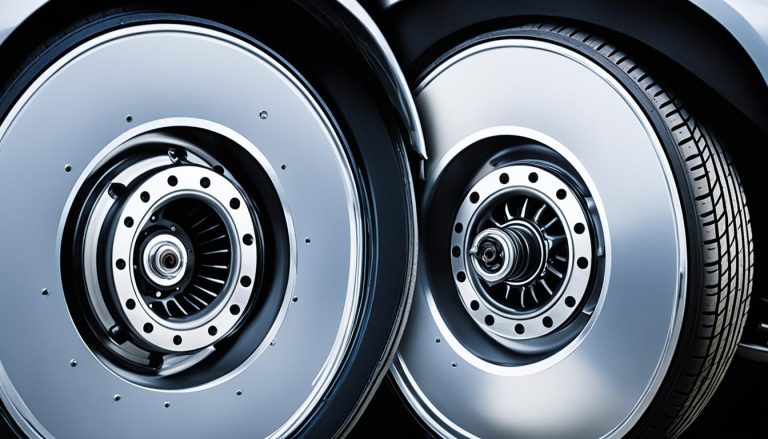Locking Rear Diff vs Limited Slip in Snow
When the temperature drops and the roads turn white, navigating through snow and ice presents a unique set of challenges. The choice between a locking rear differential and limited slip in snowy conditions is more than just a trivial decision—it’s about the control and safety of your vehicle. If you’re tackling winter driving, understanding the differences between these differential types is essential for maintaining grip on those slippery roads.
Snow driving demands a robust system to manage traction, and that’s where choices like the locking differential come into play. It’s designed to propel you forward by turning both wheels at the same speed—a godsend when you’re off-road or in deep snow. But when ice enters the equation, this feature may give you a bit of a slide, as you could find your vehicle moving sideways rather than in the direction you’re steering.
The limited slip differential, by contrast, is like your savvy winter driving companion, automatically transferring power to the wheel with more traction when it senses the other starting to slip. This can mean a smoother ride and less fishtailing, yet it may not deliver the extreme traction of a locker when you’re off the beaten path.
As the wintry roads await, let’s delve into the capabilities of these systems to ensure that your choice suits your winter driving needs.
Key Takeaways for Choosing Between Locking Rear Diff and Limited Slip in Snow
- Locking rear differentials provide equal power to both wheels, which is great for off-road traction but risky on ice.
- Limited slip differentials balance stability and power, making them suitable for a variety of winter road conditions.
- The effectiveness of a locking differential can be hindered in icy cornering situations.
- For regular snow driving, limited slip offers a controlled experience without compromising on-road performance.
- Selectable lockers give you the flexibility to adapt to changing road surfaces, best for drivers who face diverse conditions.
Understanding the Mechanics of Locking Rear Differentials and Limited Slip in Snowy Conditions
When you’re facing the challenges of driving in snowy conditions, understanding the mechanical differences between rear differential options is critical to maintaining optimal snow traction. Your vehicle’s differential affects how power is transferred to the wheels and can dramatically influence performance in winter weather.
Lockers vs limited slip differentials present a choice between two distinct methods for managing traction. The locking rear differential, often referred to as a ‘locker’, ensures that both wheels on an axle spin at the exact same speed. This is especially useful when you require uncompromising traction off-road. However, this same feature can become a liability on ice or compacted snow, where the unyielding locked state can lead to loss of control and sideways skidding.
In contrast, limited slip differentials provide a more nuanced approach to traction management. They allow for some difference in wheel speed, thereby offering a smoother transition when one wheel begins to lose grip. This system is not without its faults in snow, however, as it may struggle when there’s a significant traction discrepancy between your vehicle’s tyres—such as one wheel being on ice and the other on dry pavement.
| Feature | Locking Rear Differential | Limited Slip Differential |
|---|---|---|
| Wheel Speed Synchronization | Yes (Locked together) | No (Allows variance) |
| Optimal Use Scenario | Off-road, Uneven Terrain | On-road, Consistent Conditions |
| Risk in Snow/Ice | High (Sideways movement) | Medium (Reduced effectiveness) |
| Traction Management | Maximum (Both wheels powered equally) | Moderate (Power shifts to wheel with grip) |
As you consider these options, remember that the best choice depends on your driving conditions and the level of control you need. A locking differential may give you an edge in virtually impassable off-road scenarios, while a limited slip may serve better on maintained, snowy roads where subtler traction management is a boon.
It’s essential to account for your personal comfort and safety, as well as the capabilities of your vehicle, when selecting the right rear differential options for snow-ridden adventures. Whether you’re braving the backcountry or commuting through a winter wonderland, making an informed decision will help ensure you stay on course and in control.
Assessing the Off-Road Performance: Lockers vs Limited Slip
When you’re pushing your vehicle to the limits on rugged terrain, the distinction between locking differentials and limited slip could mean the difference between an exhilarating day on the trails or getting stuck in a rut. Understanding how these two systems enhance your off-road performance is critical, especially when 4×4 traction and proper differential selection can transform your off-road adventure.
The Role of Traction in Off-Road Capability
For those passionate about off-road exploration, the traction under your wheels is what stands between conquering the next obstacle and being defeated by it. Locking differentials, known for their robust locking of the axles, ensure that both wheels receive power equally, thus maintaining consistent traction across uneven surfaces – a feature that’s indispensable for activities like rock crawling. Meanwhile, limited slip differentials intelligently allocate power to the wheel with the most grip, providing a smoother experience but with slightly compromised raw power in extreme conditions.
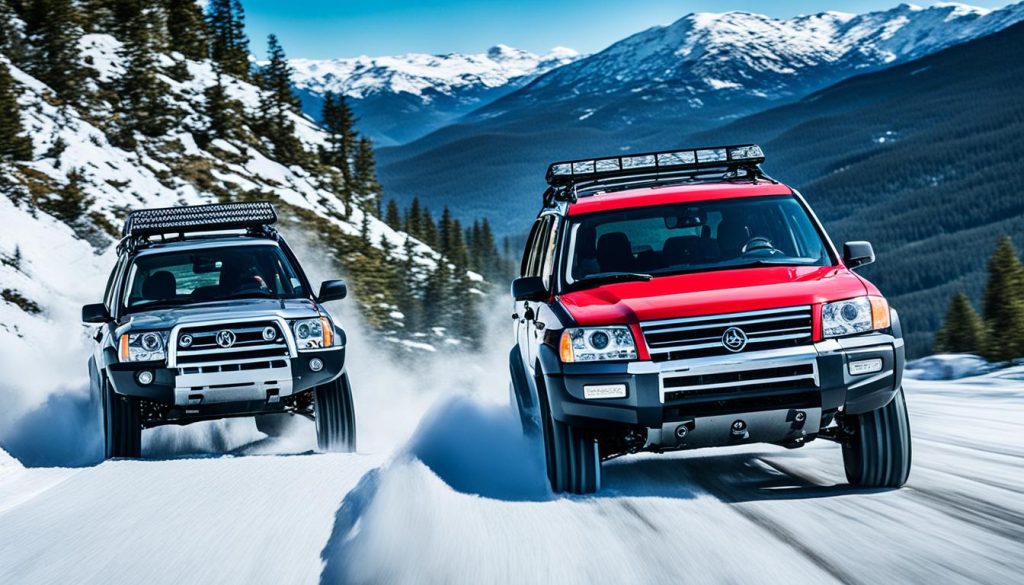
Choosing Differentials Based on Terrain
Striking the right balance when choosing differentials is paramount, particularly when dealing with challenges such as snow traction. In the icy unpredictability of snowy terrains, a selectable locker holds court. It’s the Swiss Army knife of differentials, providing the flexibility to adapt to changing surfaces with the flip of a switch. If your adventures lead you down less treacherous paths, the less intrusive nature of a limited slip differential might be the key to a smooth and reliable ride through winter landscapes.
| Terrain Type | Locking Differential | Limited Slip |
|---|---|---|
| Rocky Trails | Maximum Traction | Moderate Traction |
| Snow and Ice | Selectable for Adaptability | Consistent Handling |
| Mild Off-Road | Overkill for some conditions | Balance of Traction and Comfort |
| Mud and Ruts | Essential for forward motion | May struggle without traction aids |
Whether your journey leads you through snow-capped peaks or muddy forests, the ability to choose the right differential for the terrain is the essence of an adept off-roader. Lockers and limited slip differentials each offer a bounty of benefits that, when matched with the right situation, can enhance your off-road performance and safety in ways you’ll definitely feel behind the wheel.
Locking Rear Differential vs Limited Slip Snow – Weighing the Advantages
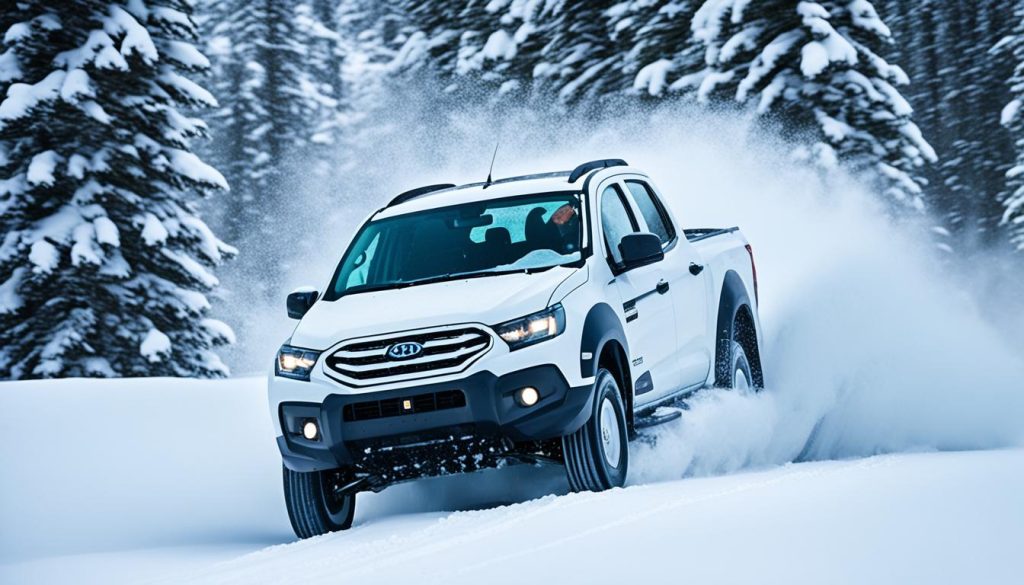
When you’re confronted with the decision of choosing between locking rear differential advantages and limited slip benefits for your vehicle in snow, it’s essential to understand the functional disparities and situational appropriateness of these differential types. Considering the challenges and needs of winter driving, your choice can greatly affect your vehicle’s performance on snow-covered tracks.
With a locking rear differential, you gain the upper hand in extreme off-road scenarios. This system ensures that both wheels on the rear axle rotate at the same speed, offering formidable traction that is necessary for battling deep snow or treacherous terrain. On the flip side, the limited slip differential is the more favored option for day-to-day winter road driving, affording a more stable and seamless driving experience by allocating power to the wheel with superior grip, which is particularly useful in preventing wheel spin on slick roads.
However, there’s a trade-off. While the locking rear differential excels off the beaten path, it may not perform as flawlessly on roads that alternate between icy and dry patches. Such conditions might expose the limitations of this differential type, possibly leading to less controlled traction. Conversely, the gradual and refined power distribution of limited slip differentials may not be as effective in very demanding off-road situations but is perfectly suited for maintaining composure on slippery streets.
| Feature | Locking Rear Differential | Limited Slip Differential |
|---|---|---|
| Best Used In | Extreme off-road conditions | On-road winter driving |
| Traction | Maximum traction on both wheels | Balanced traction; power to the wheel with more grip |
| Driving Stability | Can be unstable on mixed dry and icy roads | Enhanced stability and less wheel spin on slippery roads |
| Snow Performance | Unmatched in deep snow and rugged terrain | Reliable in light snow and well-maintained roads |
As you consider your options, factor in your typical driving conditions. Are you regularly conquering harsh, snowy landscapes that demand the most robust traction available? Or do you need a reliable daily driver that deftly handles mixed winter road conditions? Your specific requirements will guide you toward the right choice, ensuring that you maneuver through winter’s challenges with confidence.
Impact of Differential Types on Winter Driving Safety
As the temperature plummets and snow blankets the roads, your choice of differential—be it a locking mechanism or limited slip—can markedly affect your driving safety. We’ll delve into real-world experiences and the nuanced ways differentials impact vehicle handling on wintry roads, empowering you to make an informed decision for your winter driving needs.
Driver Experiences with Locking Differentials and Limited Slip in Snow
Locking differentials, often revered for their off-road prowess, can be a bit intense on icy roads. Their ability to ensure both wheels rotate in unison means traction is maximized, but the resultant “white knuckle” drives aren’t everyone’s cup of tea. In sharp contrast, limited slip differentials are celebrated for delivering a gentler grip on slick streets—leading to a safer and more predictable ride when commuting through Jack Frost’s territory. This difference in engagement can significantly influence your vehicle’s stability and ultimately, your winter driving safety.
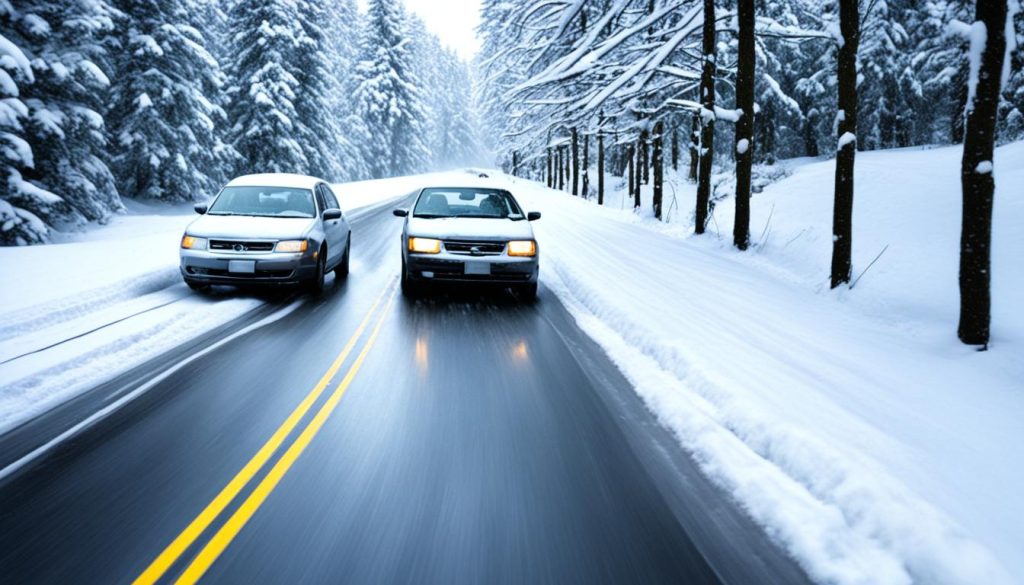
How Differential Choices Affect Vehicle Handling on Icy Roads
Making the right differential choices is crucial for handling icy roads with confidence. Locking differentials might provide excellent traction, but they can also lead to nerve-wracking lateral slides if not used judiciously. On the other side of the tundra, limited slip differentials tout a more predictable experience, distributing power to the wheel with more grip and ensuring that your vehicle doesn’t take unexpected turns. Still, their performance can be compromised in off-camber situations, making them less reliable when sudden loss of traction is a threat.
| Differential Type | Winter Driving Safety | Handling Icy Roads | Preferred Usage |
|---|---|---|---|
| Locking Differentials | High traction but challenging on ice | Reduced lateral stability | Off-road and extreme conditions |
| Limited Slip Differentials | Increased control and stability | Predictable handling, risk in off-camber | On-road and mild off-road conditions |
| Selectable Lockers | Adaptable control, optimal safety | Best of both worlds, stability and traction | Varied, switchable for conditions |
In the end, whether you find your peace of mind behind the wheel with a differential that secures you to the trail like a mountain goat, or one that lets you glide over frost-laden roads with the grace of a figure skater, selecting the right differential is pivotal for your winter driving safety. You’ll have to weigh the pros and cons of each to find your sweet spot in snow driving safety.
Comparing Cost and Installation: Rear Differential Options for Snowy Climates
When preparing for snow driving, considering the right rear differential options is essential. Let’s delve into the cost and installation factors of locking differentials and limited slip differentials, which could significantly affect your vehicle’s performance in wintry conditions.
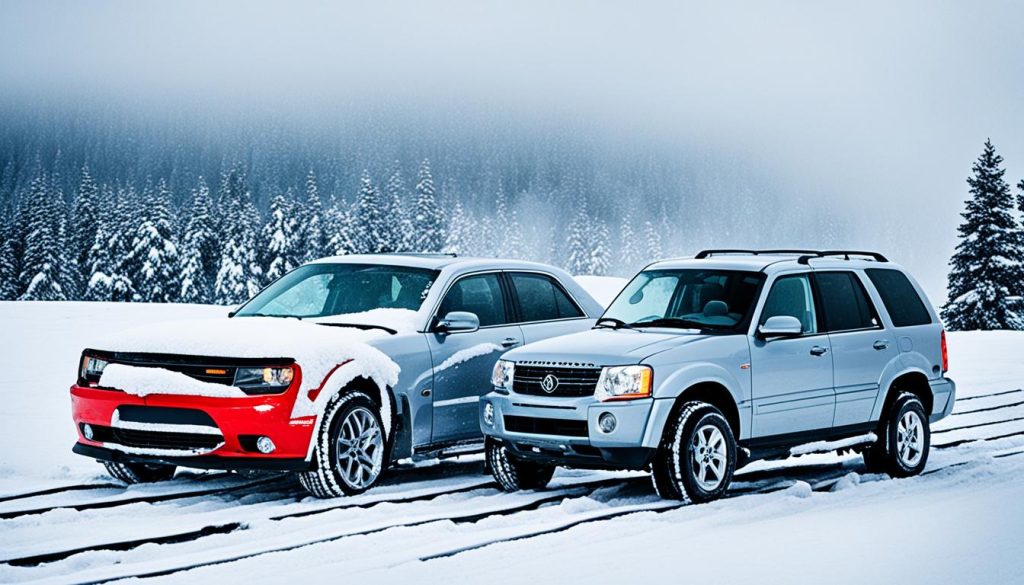
The installation complexity and initial expenditure are crucial elements influencing your choice of rear differential. Selectable locking differentials, while offering high performance, come with a steeper cost. On the other hand, the more wallet-friendly limited slip differentials present a less intricate installation process. With the table below, you can compare the typical costs and specific factors associated with each type.
| Differential Type | Cost Range | Installation Complexity | Recommended For |
|---|---|---|---|
| Selectable Locking Differential | $800 – $2500 | High (professional installation recommended) | Severe off-road usage |
| Limited Slip Differential | $500 – $1200 | Moderate (DIY possible for experienced individuals) | Daily snow road driving |
While the cost is an upfront factor, consider how a rear differential optimizes your experience in snowy climates. Selectable locking differentials may be ideal if you’re tackling extreme terrain. If you find yourself mainly on plowed roads, the limited slip differential might be the more pragmatic investment, balancing performance with both cost and installation convenience.
The Best Differential for Your Winter Driving Needs
When considering your vehicle’s capability in the winter months, differential selection becomes an essential aspect of ensuring safety and performance. Based on expert opinions, the choice of differential—whether locking or limited slip—largely correlates with the environments you frequently encounter. If you’re a driver who sticks to well-maintained roads and faces occasional light trails covered in snow, a limited slip differential often provides the right blend of control and value. However, for the individual who regularly tackles severe, snow-covered terrain, the advantages of a locking differential, particularly a selectable one, could be instrumental to your driving success. This decision is not just about preference; it’s about matching the technology to the terrain.
Expert Opinions on Differential Selection for Various Conditions
Maneuvering through winter’s challenges requires informed choices, and expert opinions highlight the necessity of aligning those choices with actual driving conditions. If managing snow traction is a primary concern due to frequently changing road surfaces, a 4×4 system paired with the appropriate differential type—limited slip or locking—can make all the difference. Winter driving without the right setup not only compromises traction but also can increase the risk of getting stuck or experiencing an accident. By trusting in professional guidance and considering your typical winter conditions, you can leverage the mechanical advantages that modern vehicle technology offers.
Managing Snow Traction with 4×4 Systems and Differential Types
The synergy between 4×4 systems and differential types cannot be understated when confronting snowy and icy roads. A capable 4×4 system enhances your ability to maintain traction, but coupling it with the right differential type amplifies this effect. Whether navigating a blizzard-hit backcountry road with a robust locking differential or commuting through a snow-dusted cityscape with a limited slip, understanding which setup aligns with your driving habits maximizes your vehicle’s potential. In the realm of winter driving, where every bit of grip counts, knowing how to manage snow traction can keep you moving confidently and safely through the coldest season.
FAQ
What are the main differences between a locking rear differential and limited slip in snow conditions?
A locking rear differential, or locker, ensures both wheels on an axle turn at the same rate, providing consistent traction which is beneficial off-road but can be challenging on icy roads as it might lead to sideways movement. A limited slip differential allocates power to the wheel with more traction when slipping occurs, offering better stability for daily driving on snowy or icy roads.
How do locking rear differentials work in snowy conditions compared to limited slip differentials?
In snowy conditions, locking rear differentials can provide maximum traction by forcing both wheels to rotate at the same speed, which is ideal for deep snow and off-road scenarios. Limited slip differentials, however, distribute power to the wheel with more grip, enabling better vehicle control and stability on roads with varying degrees of snow and ice coverage.
Can using a locking rear differential compromise safety in winter driving?
While lockers can offer superior traction in certain off-road conditions, they may compromise lateral stability on icy or snowy roads, leading to potential slides or spins. It’s important for drivers to understand how to manage the vehicle if they’re equipped with a locker in winter conditions.
Are limited slip differentials a good choice for off-road performance in the snow?
Limited slip differentials are generally better suited for light to moderate off-road conditions with even traction surfaces. They provide a balance of improved traction over an open differential, while also offering a more controlled driving experience compared to lockers in severe off-road scenarios.
What factors should I consider when choosing between a locking differential and limited slip for winter driving?
When choosing between these differential types for winter use, consider your driving habits and the typical conditions you face. Locking differentials are preferable for more extreme off-road situations, while limited slip diffs are usually adequate for day-to-day driving on snowy or icy roads. The cost, installation complexity, and your own experience and comfort with vehicle handling in winter conditions should also influence your decision.
How do driver experiences vary between lockers and limited slips in the snow?
Driver experiences can vary widely. Some find lockers provide unmatched traction for off-road snow conditions but can make driving on icy roads nerve-wracking. Others prefer the greater controllability and gradual engagement of limited slip differentials on slippery surfaces, which can be safer for routine winter driving.
Are there cost differences between installing a locking rear differential and a limited slip?
Yes, there can be significant cost differences. Lockers, especially selectable ones, tend to be more expensive both in purchase price and installation, as they can require additional hardware and labor. Limited slip differentials are typically less expensive and simpler to install. Depending on your needs, a limited slip could be a more cost-effective solution for improved snow traction.
Which is better for handling icy roads: a locking differential or a limited slip differential?
A limited slip differential is generally considered better for handling icy roads, as it provides smoother power distribution between wheels, thus maintaining stability and mitigating the risk of skidding. Lockers can provide maximum traction but might decrease lateral stability which could lead to sliding, especially on turns.
What do experts recommend for snowy and icy driving conditions?
Most experts recommend choosing a differential based on your specific driving conditions. For urban and well-maintained roads with occasional snow, a limited slip differential offers a balance of improved traction and stability. In rural areas or for adventurous off-roading in severe snow, a selectable locker provides optimal traction and flexibility.
How does a 4×4 system with the right differential type improve traction in snow?
A 4×4 system inherently improves traction by powering all four wheels. By integrating the right differential—either a locker or a limited slip—the 4×4’s performance in snow and ice is further enhanced, providing superior handling and stability. Selecting the differential that matches your driving needs maximizes safety and control.

